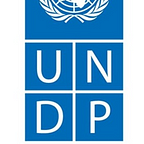Increasing water supplies in rural Ghana
In the northern savannah region of Ghana, more than 60% of households depend on wells compared to the national average of 32.3%.
“Our community dam is our only source of water. But these days, it dries up [to] 3 times in the year and the water becomes muddy, but because we have no choice, we have to use it”.
Inusah Ibn Hassan, Assemblyman for the village of Tampion in the Northern Region of Ghana, is very aware of the negative impacts of climate change on natural resources and livelihoods.
More frequent and severe weather events mean unmet water needs, declining crop yields and food insecurity. And, with average temperatures rising faster in the northern savannah region than in the coastal areas of Ghana, risks include increased north-south migration.
Water management
To respond to these risks, Ghana has made significant progress on the policy front. The country is one of the few in Sub Saharan Africa to have a National Climate Change Policy document, and an implementation plan for its Nationally Determined Contributions.
In addition, comprehensive water management and investment plans for the Black Volta and Oti river basins are expected to address and reduce the impact of climate change on surface and groundwater sources and livelihood.
Plans for the country’s main river basins are expected to address the underlying drivers of water resource degradation and stimulate investments. Photo: Volta River Authority.
The challenge however, is to translate these policy documents into concrete actions at the local level. In the northern savannah region, over 60% of households depend on wells compared to national average of 32.3%. Similarly, about 21% depend on natural water sources such as rivers, rainwater, ponds or reservoirs for their water use, compared to 9% at the national level.
To address these concerns, UNDP is helping vulnerable communities in Northern Ghana better manage their water resources and diversify livelihoods in collaboration with the Ministry of Environment, Science, Technology and Innovation (MESTI).
Fetching water takes over 30 minutes in rural areas and less than 2 minutes per day in Accra, Ghana’s capital. Source: Ghana Living Standard Survey (GLSS7, 2014).
With funding from the Adaptation Fund, a 4-year project supports small-scale irrigation schemes and water harvesting systems to ensure year-round water availability.
Other initiatives include drilling boreholes, constructing or rehabilitating sand dams and canals, as well as providing alternative livelihood options such as shea butter and groundnut oil extraction, beekeeping, fish farming, tree seedling nurseries and dry season vegetable production in the 50 communities of Northern Ghana.
At the community level, another project funded by the Norwegian Government seeks to improve understanding of climate-related risks, reduce vulnerability to hazards, and enhance capacities for disaster risk reduction in ten districts of Ghana.
On top of providing hazard mapping, early warning systems and vulnerability assessments, the project also supports the installation of boreholes and dugouts to improve the resilience of rural communities to climate change impacts while supporting Ghana’s implementation of SDG 6: Access to clean water and sanitation.
So far, over 130 boreholes have been drilled in 50 climate risks communities, providing access to clean water to over 45,000 people, mainly women and children.
“ We used to suffer to get water especially during the dry season and had to travel far. With this borehole water close-by, we can only be gratefu l”, says Fatima Mahama, a resident of Kakease in Savannah Region of Ghana.
Text and photos by Praise Nutakor & Stephen Kansuk/UNDP Ghana
Originally published at https://medium.com on March 15, 2019.
